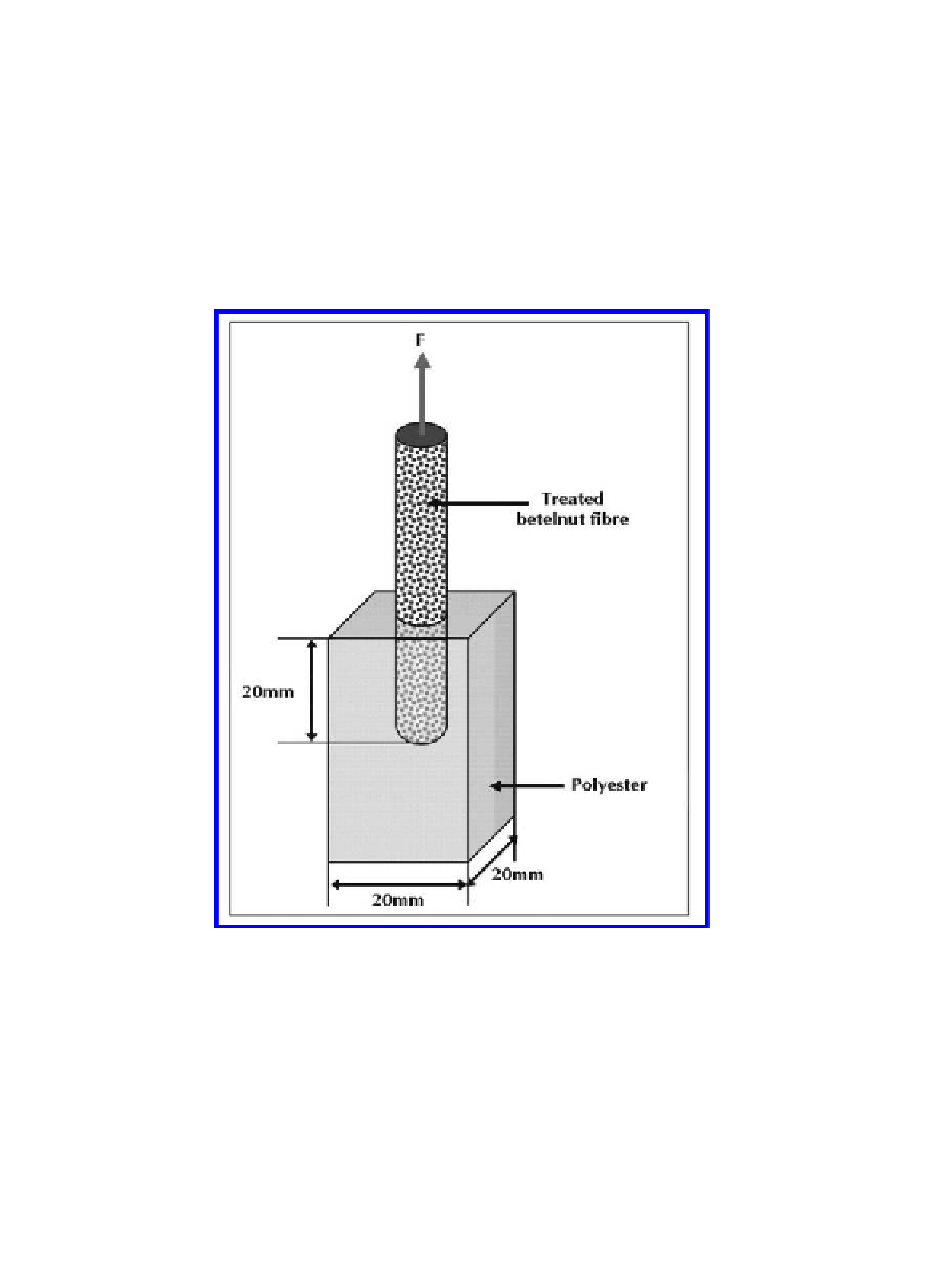Biomedical Engineering Reference
In-Depth Information
Fiber Pullout test
The SFPT were conducted on universal test system (100 Q Standalone) to determine
the interfacial adhesion characteristics of treated betelnut fiber with the polyester ma-
trix. Figure 2 shows the schematic drawing of the pullout test. Further detail on the
sample preparation and the test procedure were explained in the past publication done
by the author (Nirmal and Yousif, 2009). The loading speed was 1 mm/min. It should
be mentioned here that the tensile properties of single betelnut fiber were studied for
dry and wet fibers. Under wet conditions, the fibers were soaked in tap water (hardness
120-130 mg/l) for 24 hr and then tested.
Figure 2.
Schematic illustration of single betelnut fiber pullout test.
The pullout result for single fiber (dry/wet) is presented in
Figure 3(a).
The Figure
shows that both trends (under dry/wet) are the same. The maximum stress for the dry
fiber is about 280 MPa which is almost similar to the single fiber strength. Similarly,
the wet fiber reached to about 250 MPa. This indicates that there is no pullout of fiber
took place during the test. Moreover, the strength is also the same as the single tensile
result. This shows that the interfacial adhesion of the treated fiber under dry/wet con-
ditions is very high preventing the pulling out process. The microscopy of the pullout
samples are shown in Figures 3(b) and (c) which explain the above results.

Search WWH ::

Custom Search